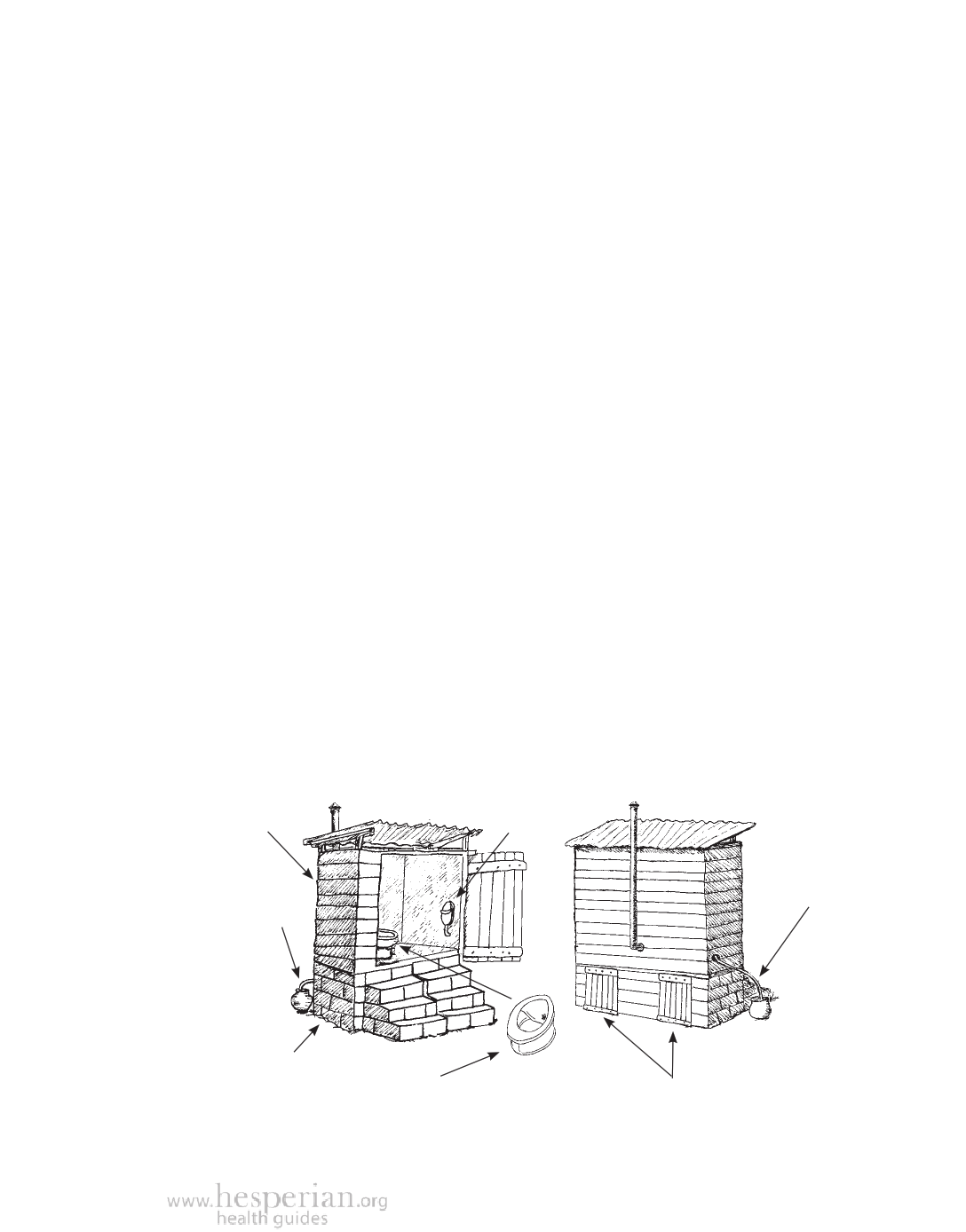
Eco lo g i c a l To i l e t s 129
Urine diverting dry toilets
Dry toilets do not use pits. They are built above ground so it is easier to remove
the contents. They also have a toilet bowl with separate compartments that
keep urine and feces separate. This helps the contents of the toilet stay dry,
which kills germs and reduces smells. This also allows the urine to be used as
fertilizer. Because they are built above ground and lined on the bottom, well
built dry toilets do not contaminate groundwater.
Dry toilets are more costly to build than pit toilets. Their safe use requires
training, because they are used differently than pit toilets and flush toilets.
And it takes some work to keep them well maintained. But they are very good
for people who want to produce fertilizer from their wastes. They are also a
good choice in places where:
• The groundwater is
too high for pit toilets.
• Flooding is common.
• The ground is too hard to dig.
• People want a permanent toilet
in or near their house.
2 chamber dry toilets
This dry toilet has 2 chambers where feces break down into safe fertilizer. One
side is used as the toilet while the feces on the other side dry and break down.
A special toilet bowl that works for both men and women separates urine from
feces. The urine drains through a tube into a container outside of the toilet.
After about a year, the dried feces are removed and added to a compost pile
or used on fields or gardens. The collected urine can be mixed with water and
used as fertilizer (see page 134).
Shelter for
comfort,
privacy, and
to keep the
toilet dry
Urine pot where
the urine is
collected from
the toilet and
the urinal
2 chambers
made of brick,
concrete, or
other durable
material. While
one is in use as a
toilet, feces dry
and decompose
in the other.
Parts of the 2 chamber dry toilet
Front of toilet
Back of toilet
Urinal
Hose to
divert
urine from
urinal and
bowl to
urine pot
This dry toilet bowl separates urine
from feces. Home-made urine catching
devices work just as well (see page 130).
Small doors at the
back to remove
dried feces
A Community Guide to Environmental Health 2012